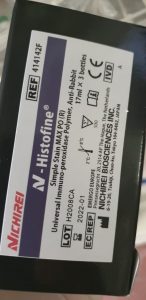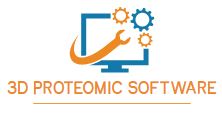VacA is a high-molecular weight multimeric pore-forming protein encoded by the chromosomal gene vacA of Helicobacter pylori J99 strian. It performs a big position within the growth of gastric most cancers in human by inducing the formation of vacuoles. Genomics and <em>proteomics</em> options of an organism have offered a plethora of potential drug targets. The crystal construction of VacA is just not out there in any structural database; therefore a <em>3D</em> construction could be very important for structural research and discovery of potential inhibitors towards proteins. On this examine <em>3D</em> construction of VacA is modelled a by utilizing Bhageerath: an vitality primarily based net enabled laptop <em>software program</em> suite.
Additional validation was performed by WHAT CHECK to supply proof that the distribution of the primary chain bond lengths and omega bond angles had been inside limits with Z-score 1.zero and error values are negligible. The modelled protein was submitted to Protein Mannequin Database and might be downloaded with PMDID PM0077963. Additional we discovered that metallo peptidase “M3” cleaves VacA and helps in import mechanism in mitochondria. In keeping with our examine VacA steriochemical validation exhibits 91.7% residues are in allowed area of Ramachandran plot.
Construction of metallo peptidase can also be not out there in any structural database so we modelled and validated its construction. With the assistance of docking research we blocked the lively website of metallo peptidase by ligand LA3 and 294 with binding vitality -5.9 and -5.2 KJ/mol respectively, thus prevented import mechanism of VacA in mitochondria. The inhibitors recognized from our examine had been LA3 and 294 ligands. The investigation concluded that these medication could possibly be used because the potential inhibitors towards the harm of abdomen and duodenum, which finally reduces the chance of ulcer in addition to gastric most cancers.
LIBP-Pred: net server for lipid binding proteins utilizing structural community parameters; PDB mining of human most cancers biomarkers and drug targets in parasites and micro organism.
Lipid-Binding Proteins (LIBPs) or Fatty Acid-Binding Proteins (FABPs) play an necessary position in lots of ailments reminiscent of several types of most cancers, kidney harm, atherosclerosis, diabetes, intestinal ischemia and parasitic infections. Thus, the computational strategies that may predict LIBPs primarily based on <em>3D</em> construction parameters turned a objective of main significance for drug-target discovery, vaccine design and biomarker choice. As well as, the Protein Knowledge Financial institution (PDB) accommodates 3000+ protein <em>3D</em> buildings with unknown perform.
This checklist, in addition to new experimental outcomes in <em>proteomics</em> analysis, is a really fascinating supply to find related proteins, together with LIBPs. Nonetheless, to the most effective of our data, there aren’t any basic fashions to foretell new LIBPs primarily based on <em>3D</em> buildings. We demonstrated the PDB mining possibility performing a predictive examine of 2000+ proteins with unknown perform. Attention-grabbing outcomes concerning the invention of latest Most cancers Biomarkers in people or drug targets in parasites have been mentioned right here on this sense.
We developed new Quantitative Construction-Exercise Relationship (QSAR) fashions primarily based on <em>3D</em> electrostatic parameters of 1801 totally different proteins, together with 801 LIBPs. We calculated these electrostatic parameters with the MARCH-INSIDE <em>software program</em> and so they correspond to the complete protein or to particular protein areas named core, interior, center, and floor. We used these parameters as inputs to develop a easy Linear Discriminant Evaluation (LDA) classifier to discriminate <em>3D</em> construction of LIBPs from different proteins. We carried out this predictor within the net server named LIBP-Pred, freely out there at , together with different necessary net servers of the Bio-AIMS portal. The customers can perform an computerized retrieval of protein buildings from PDB or add their customized protein structural fashions from their disk created with LOMETS server.

A root proteomics-based perception reveals dynamic regulation of root proteins below progressive drought stress and restoration in Vigna radiata (L.) Wilczek.
To grasp the advanced drought response mechanism in crop vegetation, a scientific root <em>proteomics</em> strategy was adopted to establish and analyze the expression patterns of differentially expressed main root proteins of Vigna radiata throughout short-term (three days) and consecutive long-term water-deficit (6 days) in addition to throughout restoration (6 days after re-watering). Photosynthetic gasoline change parameters of the plant had been measured concurrently through the stress remedy and restoration interval.
A complete of 26 main protein spots had been efficiently recognized by mass spectrometry, which had been grouped in accordance with their expression sample throughout short-term stress as considerably up-regulated (9), down-regulated (10), extremely down-regulated, past detection stage of the <em>software program</em> (2) and unchanged (5).
[Linking template=”default” type=”products” search=”magnetic beads proteomics C8″ header=”3″ limit=”165″ start=”2″ showCatalogNumber=”true” showSize=”true” showSupplier=”true” showPrice=”true” showDescription=”true” showAdditionalInformation=”true” showImage=”true” showSchemaMarkup=”true” imageWidth=”” imageHeight=””]
The next modifications within the expression patterns of those proteins throughout long-term stress remedy and restoration interval was analyzed to deal with the dynamic regulation of those functionally necessary proteins throughout progressive drought and restoration interval. Cytoskeleton-related proteins had been down-regulated initially (<em>3d</em>) however regained their expression ranges throughout subsequent water-deficit (6d) whereas glycoprotein like lectins, which had been primarily recognized to be concerned in legume-rhizobia symbiosis, maintained their enhanced expression ranges throughout each quick and long-term drought remedy indicating their potential position in drought stress response of legumes.
Oxidative stress-related proteins together with Cu/Zn superoxide dismutase, oxidoreductase and aldehyde reductase had been additionally up-regulated. The analyses of the dynamic regulation of those root proteins throughout short- and long-term water-deficit in addition to restoration interval could show essential for additional understanding of drought response mechanisms in meals legumes.

